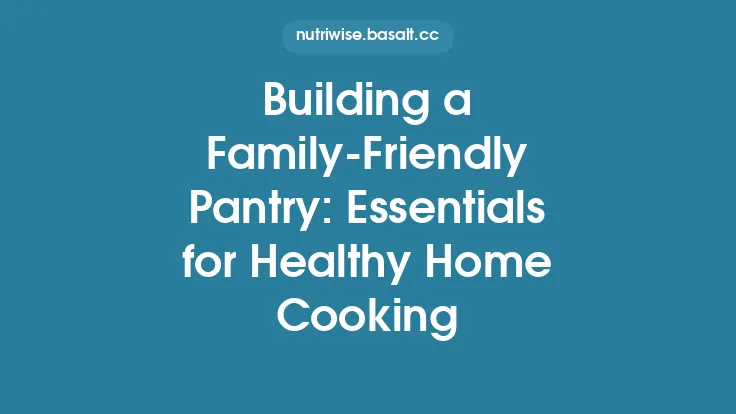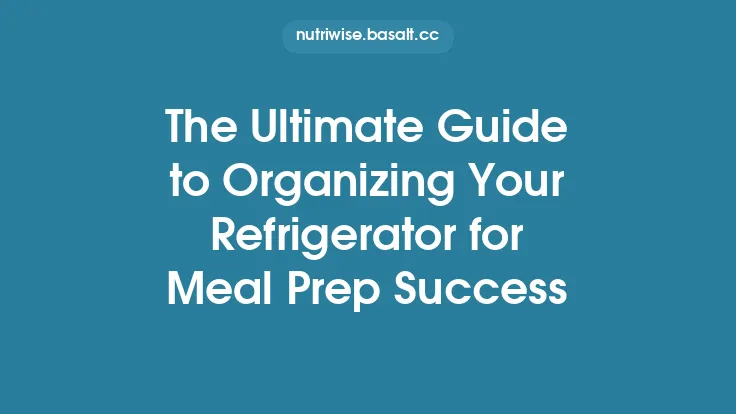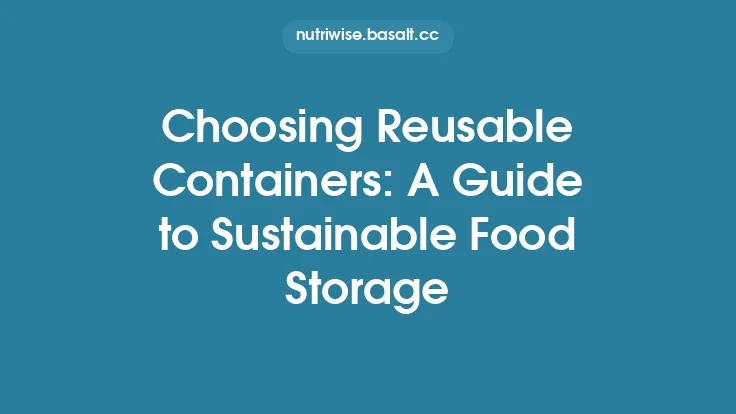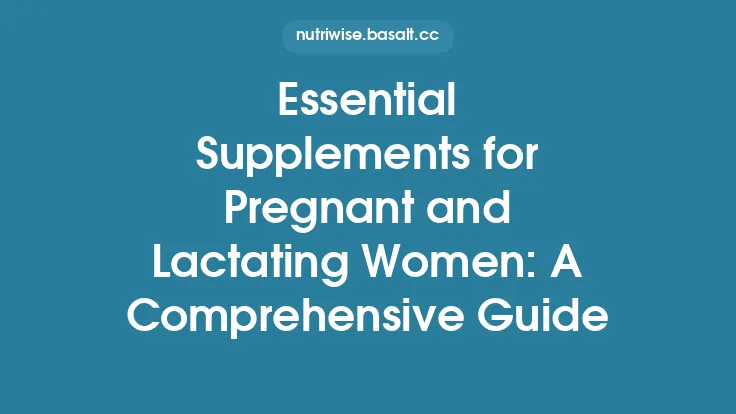Baking without nuts doesn’t mean you have to sacrifice flavor, texture, or creativity. Whether you’re cooking for someone with a severe nut allergy, managing a household where nuts are off‑limits, or simply looking to expand your repertoire of safe baked goods, mastering the fundamentals of nut‑free baking will give you confidence to whip up everything from fluffy cakes to crisp cookies. This guide walks you through the essential ingredients, techniques, and troubleshooting tips you need to create delicious, allergy‑friendly treats that anyone can enjoy.
Understanding Nut Allergies and Cross‑Contamination
The Scope of Nut Allergies
Nut allergies are among the most common food allergies, affecting roughly 1–2 % of the population. They can be triggered by tree nuts (such as almonds, walnuts, cashews, pistachios, hazelnuts, and Brazil nuts) and, in some cases, peanuts (a legume). Reactions can range from mild oral irritation to life‑threatening anaphylaxis, so strict avoidance is essential.
Cross‑Contamination Risks
Even trace amounts of nut particles can cause a reaction. Common sources of cross‑contamination include:
- Shared equipment: Mixing bowls, spatulas, cookie sheets, and ovens that have previously been used for nut‑containing recipes.
- Bulk bins and pre‑packaged ingredients: Nuts can inadvertently mix with other dry goods.
- Processing facilities: Many packaged flours, sugars, and chocolate products are processed on lines that also handle nuts.
Best practice: Designate a “nut‑free zone” in your kitchen, use separate utensils, and always read labels for statements like “may contain traces of nuts” or “processed in a facility that also processes nuts.”
Core Nut‑Free Baking Ingredients
Flours and Starches
Choosing the right flour is the foundation of any baked good. Below are versatile, nut‑free options:
| Flour/Starch | Gluten Content | Typical Uses | Flavor Profile |
|---|---|---|---|
| All‑purpose wheat flour | Contains gluten | Cakes, cookies, breads | Neutral |
| Bread flour | High gluten | Yeasted breads, pizza dough | Slightly chewy |
| Whole‑wheat flour | Contains gluten | Hearty muffins, quick breads | Nutty, earthy |
| Oat flour (certified gluten‑free) | Gluten‑free | Pancakes, cookies | Mildly sweet |
| Rice flour (white or brown) | Gluten‑free | Gluten‑free cakes, crusts | Slightly gritty if not sifted |
| Tapioca starch | Gluten‑free | Chewy textures, crisp crusts | Neutral |
| Potato starch | Gluten‑free | Light, airy cakes | Neutral |
| Sorghum flour | Gluten‑free | Muffins, pancakes | Mildly sweet |
| Millet flour | Gluten‑free | Flatbreads, biscuits | Slightly nutty (but safe) |
Tip: When substituting gluten‑free flours for wheat flour, use a blend (e.g., 1 cup rice flour + ¼ cup tapioca starch + ¼ cup potato starch) to mimic the structure provided by gluten.
Leavening Agents
Leaveners are unchanged by nut restrictions, but proper measurement is crucial:
- Baking powder: Double‑acting, provides rise in batter and oven.
- Baking soda: Requires an acidic partner (e.g., buttermilk, yogurt, lemon juice) to activate.
- Yeast: For breads and rolls; ensure it’s fresh and stored properly.
Sweeteners
Most sweeteners are naturally nut‑free, but watch for added flavors:
- Granulated sugar, brown sugar, coconut sugar (the latter is safe despite the name; it’s derived from the coconut palm, not the nut).
- Honey, maple syrup, agave nectar – all safe, but verify that no nut oils are used in processing.
Fats and Liquids
- Unsalted butter (or clarified ghee) – classic choice.
- Vegetable oils (canola, sunflower, safflower, grapeseed) – neutral flavors.
- Coconut oil – solid at room temperature; adds subtle coconut aroma.
- Dairy alternatives (almond milk is off‑limits, but oat, rice, soy, or pea milk are safe) – check for cross‑contamination statements.
Binders and Moisture Retainers
In nut‑free baking, especially gluten‑free, binders replace the structural role of nuts and gluten:
- Eggs – primary binder; for egg‑free diets, use flaxseed meal (1 tbsp ground flax + 3 tbsp water = 1 egg) or chia seed gel (same ratio).
- Xanthan gum or guar gum – ½ tsp per cup of gluten‑free flour to improve elasticity.
- Psyllium husk powder – 1 tsp per cup of flour for chewy breads.
- Applesauce or mashed banana – add moisture and mild sweetness (use sparingly to avoid overpowering flavor).
Flavor Enhancers (Nut‑Free)
- Vanilla extract, almond‑free extracts (e.g., vanilla bean, citrus, coffee)
- Spices: cinnamon, nutmeg, ginger, cardamom.
- Zest: lemon, orange, lime.
- Extracted oils: peppermint, lavender (ensure they’re nut‑free).
Equipment and Kitchen Practices for Nut‑Free Baking
- Dedicated Utensils: Keep a set of mixing bowls, spatulas, and measuring cups exclusively for nut‑free recipes.
- Separate Storage: Store nut‑free flours and sugars in sealed containers away from bulk bins that may contain nuts.
- Oven Liners: Use parchment paper or silicone baking mats that have not been used for nut‑containing items.
- Labeling System: Clearly label all nut‑free ingredients and finished products with “Nut‑Free” stickers.
- Cleaning Protocol: Wipe down countertops, mixers, and the oven with a food‑safe cleaner before starting a nut‑free batch.
Step‑by‑Step Techniques for Common Nut‑Free Baked Goods
1. Nut‑Free Cakes
Key to success: Achieve a tender crumb without the moisture that nuts often provide.
- Mixing method: Cream butter and sugar until light and fluffy (3–5 min). Add eggs one at a time, then incorporate dry ingredients (flour blend, baking powder, salt) alternately with liquid (milk or dairy‑free alternative). Do not over‑mix.
- Moisture tip: Replace nut‑based oils (e.g., almond oil) with an equal amount of neutral oil or melted butter. Add ¼ cup applesauce for extra tenderness if desired.
- Baking: Preheat oven to 350 °F (175 °C). Bake 25–30 min for a 9‑inch round cake; test with a toothpick.
2. Nut‑Free Cookies
Goal: Crisp edges with a chewy center, mimicking the texture nuts often add.
- Fat balance: Use a 1:1 ratio of butter to sugar for spread; for thicker cookies, increase flour by ¼ cup.
- Binding: If avoiding eggs, use 2 tbsp of flaxseed gel per egg‑equivalent.
- Add‑ins: Replace chopped nuts with seeds (pumpkin, sunflower) or dried fruit (cranberries, raisins) for crunch without allergens.
3. Nut‑Free Quick Breads (Muffins, Banana Bread)
- Leavening: Combine 1 tsp baking soda with 1 tbsp lemon juice or vinegar for lift.
- Moisture: Use mashed bananas, pumpkin puree, or yogurt to keep the crumb moist.
- Flour blend: 1 cup all‑purpose flour + ½ cup oat flour + ¼ tsp xanthan gum works well.
4. Nut‑Free Pie Crusts
- Fat: Use cold butter or a blend of butter and coconut oil (solid) for flakiness.
- Flour: 1 ½ cups all‑purpose flour + ¼ tsp salt. For gluten‑free, combine 1 cup rice flour, ¼ cup tapioca starch, ¼ cup potato starch, and ½ tsp xanthan gum.
- Water: Add ice‑cold water a tablespoon at a time until dough just comes together.
Troubleshooting Common Issues
| Problem | Likely Cause | Fix |
|---|---|---|
| Dry, crumbly texture | Insufficient fat or liquid; over‑mixing gluten‑free dough | Increase butter/oil by 1‑2 tbsp; add a tablespoon of milk or applesauce; mix just until combined |
| Dense, heavy crumb | Too much flour or insufficient leavening | Sift flour; verify baking powder/soda freshness; add an extra ¼ tsp of baking powder |
| Flat cookies | Butter too soft or over‑creamed; insufficient flour | Chill dough 30 min before baking; increase flour by 1‑2 tbsp |
| Crumbly pie crust | Butter melted during mixing; not enough binding | Keep butter cold; use a food processor; add a teaspoon of ice water at a time |
| Off‑flavor | Using nut‑flavored extracts (e.g., almond) or cross‑contaminated ingredients | Switch to pure vanilla, citrus, or spice extracts; verify ingredient purity |
Sample Nut‑Free Recipes to Get You Started
Classic Vanilla Sponge Cake (Nut‑Free)
Ingredients
- 1 ½ cups all‑purpose flour
- 1 tsp baking powder
- ¼ tsp salt
- ¾ cup granulated sugar
- ½ cup unsalted butter, softened
- 3 large eggs, room temperature
- ½ cup whole milk (or oat milk)
- 2 tsp pure vanilla extract
Method
- Preheat oven to 350 °F (175 °C). Grease and line a 9‑inch round pan.
- Whisk flour, baking powder, and salt together. Set aside.
- Cream butter and sugar until pale and fluffy, about 4 minutes.
- Add eggs one at a time, beating well after each addition.
- Mix in vanilla extract.
- Alternately add dry ingredients and milk, beginning and ending with dry, mixing on low speed just until combined.
- Pour batter into pan, smooth top, and bake 25‑30 minutes. Cool on a wire rack before frosting.
Chewy Oatmeal Chocolate Chip Cookies (Nut‑Free)
Ingredients
- 1 ½ cups rolled oats (certified gluten‑free if needed)
- 1 cup all‑purpose flour
- ½ tsp baking soda
- ¼ tsp salt
- ½ cup unsalted butter, melted and cooled
- ¾ cup brown sugar
- ¼ cup granulated sugar
- 1 large egg
- 2 tsp vanilla extract
- 1 cup dairy‑free chocolate chips (ensure nut‑free)
- ½ cup dried cranberries (optional)
Method
- Preheat oven to 350 °F (175 °C). Line baking sheets with parchment.
- In a bowl, whisk flour, baking soda, and salt. Set aside.
- In a separate bowl, combine melted butter, brown sugar, and granulated sugar; stir until smooth.
- Beat in egg and vanilla.
- Gradually add dry ingredients, mixing until just combined. Fold in oats, chocolate chips, and cranberries.
- Scoop tablespoonfuls onto sheets, spacing 2 inches apart.
- Bake 10‑12 minutes until edges are golden. Cool on sheet 2 minutes, then transfer to rack.
Building a Nut‑Free Baking Pantry
| Category | Recommended Items | Storage Tips |
|---|---|---|
| Flours | All‑purpose, rice, oat, sorghum, millet | Airtight containers; keep in cool, dry place |
| Sweeteners | Granulated sugar, brown sugar, coconut sugar, honey, maple syrup | Store syrups in the refrigerator after opening |
| Fats | Unsalted butter, ghee, vegetable oil, coconut oil | Keep butter refrigerated; oil in pantry |
| Leaveners | Baking powder, baking soda, active dry yeast | Store in a dry area; replace if past expiration |
| Binders | Xanthan gum, guar gum, psyllium husk, flaxseed meal | Keep sealed; use a small scoop for accuracy |
| Flavorings | Pure vanilla extract, citrus zest, spices, nut‑free extracts | Label with “nut‑free” to avoid confusion |
| Add‑ins | Dried fruit, seed mixes (pumpkin, sunflower), chocolate chips (nut‑free) | Store in airtight containers; check for cross‑contamination statements |
Safety Checklist Before Baking
- [ ] Verify that all ingredients are labeled “nut‑free” or “processed in a nut‑free facility.”
- [ ] Clean all surfaces, bowls, and utensils with hot, soapy water.
- [ ] Use separate measuring spoons for nut‑free ingredients.
- [ ] Keep an epinephrine auto‑injector (EpiPen) accessible if you’re baking for someone with a known severe nut allergy.
- [ ] Double‑check that no hidden nut derivatives (e.g., “almond flavor” or “nut oil”) are present in any ingredient.
Adapting Classic Recipes to Nut‑Free Versions
Many beloved baked goods rely on nuts for texture or flavor, but simple swaps can preserve the spirit of the original:
- Pecan pie → Sunflower seed “pecan” pie: Use roasted, salted sunflower seeds for crunch.
- Almond biscotti → Oat‑coconut biscotti: Replace almond flour with a blend of oat flour and shredded coconut (coconut is safe for nut‑allergy sufferers).
- Chocolate hazelnut spread → Chocolate‑seed spread: Blend roasted hazelnut‑free seeds (e.g., pumpkin) with cocoa and a touch of oil.
When making substitutions, keep the moisture balance in mind; nuts contribute both fat and liquid. Compensate with a small increase in butter or oil, or add a tablespoon of fruit puree.
Resources for Ongoing Learning
- Food Allergy Research & Education (FARE): Up‑to‑date guidelines on allergen labeling.
- The Allergy‑Friendly Kitchen (book series): Practical recipes and pantry guides.
- Gluten‑Free & Allergy‑Safe Baking Forums: Community tips on ingredient sourcing and troubleshooting.
- USDA FoodData Central: Detailed nutrient profiles for alternative flours and seeds.
By mastering these fundamentals, you’ll be equipped to bake confidently in any kitchen, ensuring that every bite is safe, delicious, and free from nuts. Happy baking!





